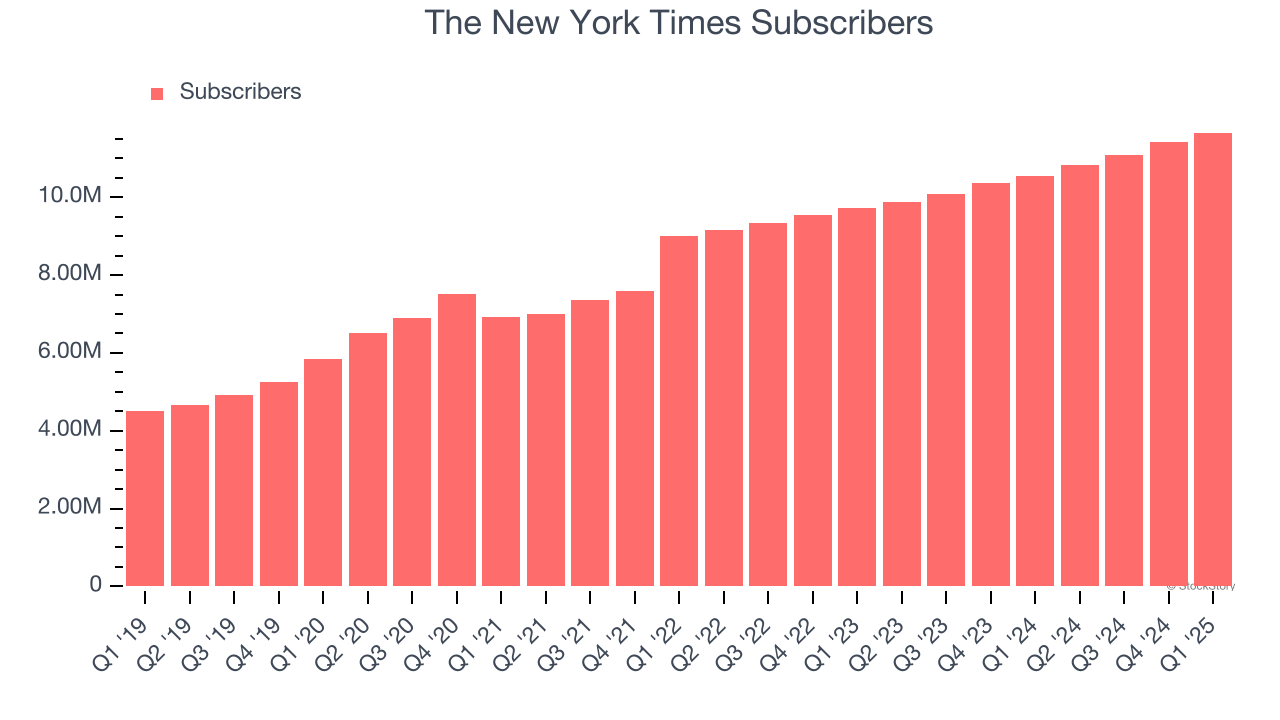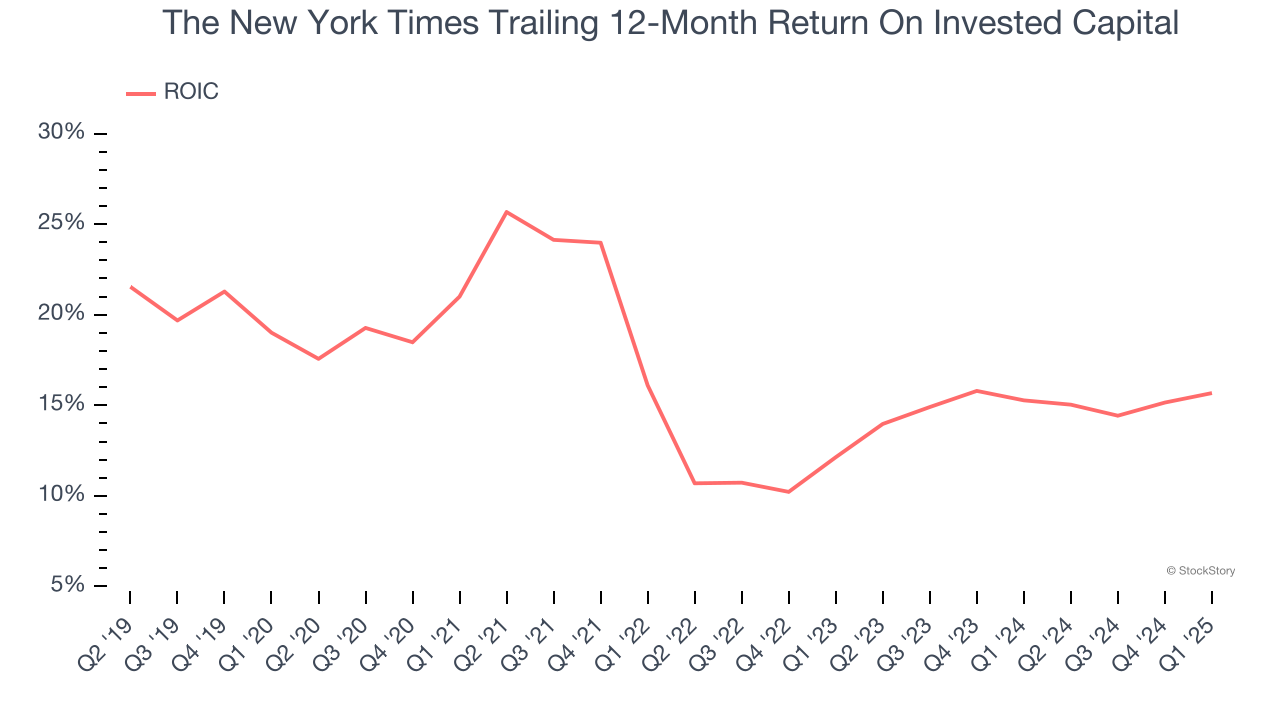
The New York Times trades at $55.32 per share and has stayed right on track with the overall market, gaining 8.9% over the last six months. At the same time, the S&P 500 has returned 7.5%.
Is there a buying opportunity in The New York Times, or does it present a risk to your portfolio? See what our analysts have to say in our full research report, it’s free.
Why Is The New York Times Not Exciting?
We're swiping left on The New York Times for now. Here are three reasons why NYT doesn't excite us and a stock we'd rather own.
1. Weak Growth in Subscribers Points to Soft Demand
Revenue growth can be broken down into changes in price and volume (for companies like The New York Times, our preferred volume metric is subscribers). While both are important, the latter is the most critical to analyze because prices have a ceiling.
The New York Times’s subscribers came in at 11.66 million in the latest quarter, and over the last two years, averaged 9.2% year-on-year growth. This performance was underwhelming and suggests it might have to lower prices or invest in product improvements to accelerate growth, factors that can hinder near-term profitability. 
2. Projected Revenue Growth Is Slim
Forecasted revenues by Wall Street analysts signal a company’s potential. Predictions may not always be accurate, but accelerating growth typically boosts valuation multiples and stock prices while slowing growth does the opposite.
Over the next 12 months, sell-side analysts expect The New York Times’s revenue to rise by 6.7%, close to its 7.7% annualized growth for the past five years. This projection is underwhelming and indicates its newer products and services will not lead to better top-line performance yet.
3. New Investments Fail to Bear Fruit as ROIC Declines
ROIC, or return on invested capital, is a metric showing how much operating profit a company generates relative to the money it has raised (debt and equity).
We like to invest in businesses with high returns, but the trend in a company’s ROIC is what often surprises the market and moves the stock price. On average, The New York Times’s ROIC decreased by 3.1 percentage points annually over the last few years. We like what management has done in the past, but its declining returns are perhaps a symptom of fewer profitable growth opportunities.

Final Judgment
The New York Times isn’t a terrible business, but it isn’t one of our picks. That said, the stock currently trades at 26× forward P/E (or $55.32 per share). This valuation tells us it’s a bit of a market darling with a lot of good news priced in - we think other companies feature superior fundamentals at the moment. We’d recommend looking at our favorite semiconductor picks and shovels play.
Stocks We Like More Than The New York Times
The market surged in 2024 and reached record highs after Donald Trump’s presidential victory in November, but questions about new economic policies are adding much uncertainty for 2025.
While the crowd speculates what might happen next, we’re homing in on the companies that can succeed regardless of the political or macroeconomic environment. Put yourself in the driver’s seat and build a durable portfolio by checking out our Top 5 Growth Stocks for this month. This is a curated list of our High Quality stocks that have generated a market-beating return of 183% over the last five years (as of March 31st 2025).
Stocks that made our list in 2020 include now familiar names such as Nvidia (+1,545% between March 2020 and March 2025) as well as under-the-radar businesses like the once-micro-cap company Tecnoglass (+1,754% five-year return). Find your next big winner with StockStory today.
StockStory is growing and hiring equity analyst and marketing roles. Are you a 0 to 1 builder passionate about the markets and AI? See the open roles here.





